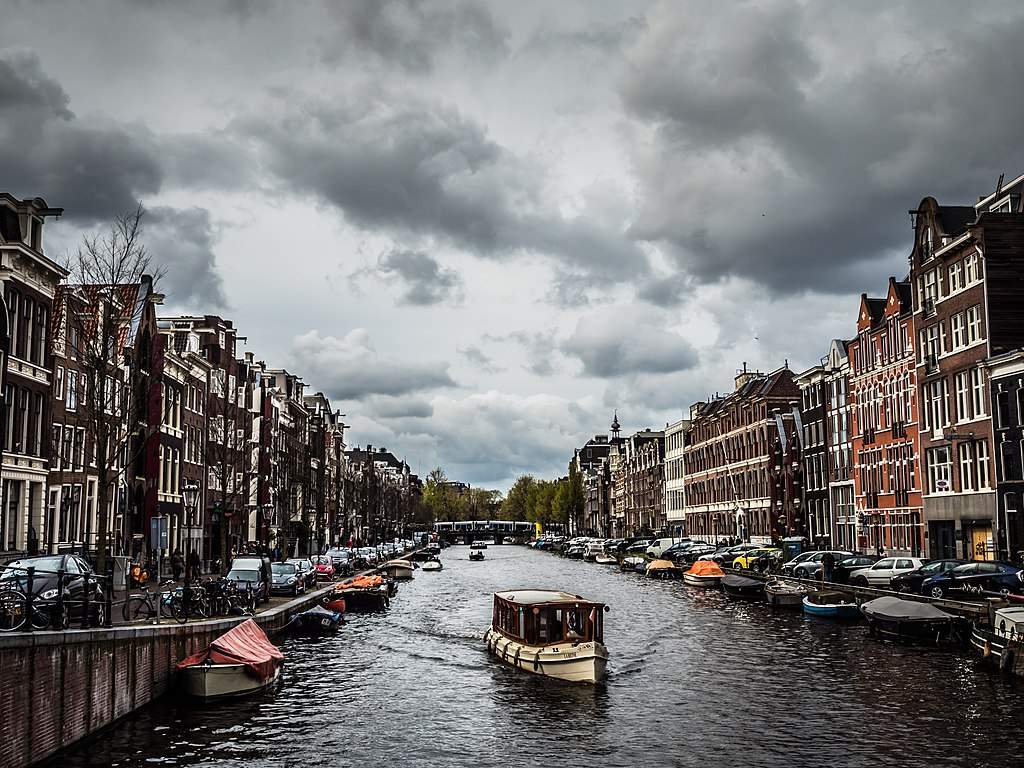
Amsterdam City Break: Discovering the Heart of the Netherlands in Three Magical Days
Amsterdam is a city of contrasts, where historic charm meets vibrant modernity. A city break in Amsterdam offers a chance to explore picturesque canals, world-renowned museums, and eclectic neighbourhoods, all within a compact and walkable setting. In this guide, I’ll take you through an unforgettable three-day itinerary designed to capture the essence of Amsterdam. From strolling along cobblestone streets to indulging in Dutch delicacies, here’s how to make the most of your Amsterdam city break.
Considering taking a cruise to Amsterdam? Arriving by sea is not only a unique way to start your adventure but also offers breathtaking views of the city from the water. Cruises often include extras like guided tours or exclusive shore excursions, making it a convenient option for those looking to experience Amsterdam’s maritime charm from the moment they arrive.
Day 1: Uncovering Amsterdam’s Historic Canals and Culinary Scene
Morning: Arrive and Settle In
If you’re arriving by cruise, you’ll dock at the Port of Amsterdam, just a stone’s throw away from the city centre. Once you’ve disembarked and checked into your accommodation, it’s time to start exploring. Begin your visit with a leisurely walk through Amsterdam’s Canal Belt, a UNESCO World Heritage site that embodies the city’s rich history and iconic architecture.
As you wander, you’ll find charming bridges, historic houseboats, and narrow townhouses adorned with ornate gables. Each canal has its own character, but Prinsengracht, Herengracht, and Keizersgracht are among the most famous. You’ll quickly see why these canals are one of Amsterdam’s most photographed attractions.
Afternoon: Dive into Amsterdam’s Maritime History with a Canal Cruise
One of the best ways to immerse yourself in the city’s history is to take a canal cruise. Various operators offer guided tours, ranging from hour-long excursions to multi-course dinner cruises. As you glide along the water, you’ll get a sense of how Amsterdam’s intricate canal system helped shape its trade and commerce over the centuries. Plus, you’ll enjoy views of iconic landmarks like the Anne Frank House, the Rijksmuseum, and Westerkerk from a unique vantage point.
Evening: Sample Amsterdam’s Diverse Culinary Offerings
Amsterdam’s food scene is as diverse as its population. For your first evening, treat yourself to a traditional Dutch dinner. Try local dishes like stamppot, a hearty blend of potatoes, vegetables, and sausage, or erwtensoep, a thick pea soup perfect for chilly evenings. If you’re in the mood for something sweet, don’t miss poffertjes—tiny pancakes dusted with powdered sugar.
For a more eclectic dining experience, Amsterdam is home to countless international restaurants, reflecting its role as a global melting pot. You’ll find everything from Indonesian rijsttafel (a feast of small dishes) to Middle Eastern mezze. Many restaurants are located along the canals, offering atmospheric outdoor seating and views of the water.
Day 2: Art, Parks, and Local Markets
Morning: Explore the Treasures of the Rijksmuseum
Amsterdam is a haven for art lovers, and the Rijksmuseum is a must-visit. Housing masterpieces from the Dutch Golden Age, including Rembrandt’s The Night Watch and Vermeer’s The Milkmaid, the museum offers a comprehensive journey through Dutch art and history. Set aside at least a couple of hours to explore the galleries, as the collection is extensive.
For an insider’s tip, arrive early to avoid crowds, especially if you want to get a close-up view of Rembrandt’s renowned pieces. If you’re visiting during spring or summer, don’t miss the museum’s garden, which features beautiful sculptures and tranquil spots for a mid-morning break.
Afternoon: Discover Van Gogh’s Vibrant World and Stroll Through Vondelpark
Just a short walk from the Rijksmuseum is the Van Gogh Museum, dedicated to the life and work of one of the most iconic artists in history. With over 200 paintings, including famous works like Sunflowers and The Bedroom, this museum provides an intimate look at Van Gogh’s creative genius and turbulent life.
After you’ve soaked in Van Gogh’s vivid colours and swirling brushstrokes, take a break in nearby Vondelpark. This sprawling green space is a favourite among locals and visitors alike, offering a peaceful escape from the city’s hustle and bustle. Pack a picnic or grab a coffee from one of the park’s cafés, and spend some time people-watching, cycling, or simply soaking up the scenery.
Evening: Dinner in De Pijp and a Stroll Through the Albert Cuyp Market
For dinner, head to De Pijp, a lively neighbourhood known for its multicultural vibe and delicious food scene. Here, you’ll find everything from trendy eateries to traditional eetcafés, where you can enjoy hearty Dutch fare in a casual setting.
While you’re in De Pijp, be sure to explore the Albert Cuyp Market, the largest outdoor market in Europe. With over 250 stalls selling everything from fresh produce and cheese to clothing and souvenirs, it’s a fantastic place to soak up the local atmosphere. Grab a snack like a freshly made stroopwafel, or pick up some Dutch cheese to take home as a tasty souvenir.
Day 3: History and Shopping in Amsterdam’s Iconic Neighbourhoods
Morning: Reflect on History at the Anne Frank House
Begin your day with a visit to the Anne Frank House, where the young diarist and her family hid during World War II. The museum offers a poignant glimpse into the hardships faced by Anne and her family, as well as the resilience of those who lived through the era. Due to its popularity, it’s best to book tickets in advance to avoid long wait times.
If you’re interested in exploring more of Amsterdam’s wartime history, consider adding a visit to the Resistance Museum, which offers further insights into the city’s experiences during the German occupation.
Afternoon: Shop and Dine in the Negen Straatjes (Nine Streets)
Next, head to the Negen Straatjes, or Nine Streets, a charming area within the Canal Belt known for its quirky boutiques, vintage shops, and cosy cafés. This is the perfect place to indulge in some retail therapy, with stores selling everything from high-end fashion and handmade jewellery to unique home decor and antique books.
Take your time browsing the shops, and be sure to stop for lunch at one of the many cafés lining the streets. The area is famous for its atmospheric coffee shops and bakeries, offering everything from freshly baked pastries to artisanal sandwiches. For a sweet treat, try a slice of Dutch apple pie, which pairs perfectly with a strong espresso.
Evening: Wrap Up Your Trip at a Cosy Brown Café
As your city break in Amsterdam comes to a close, spend your last evening unwinding at a traditional Dutch brown café. These cosy pubs are named for their dark wood interiors and smoky atmospheres, and they’re a staple of local culture. Café Hoppe and Café De Dokter are both great choices, offering a warm ambiance and a selection of Dutch beers to sample. Whether you’re sharing a drink with friends or simply savouring a quiet moment, the relaxed atmosphere of a brown café is the perfect way to end your Amsterdam adventure.
Tips for an Unforgettable Amsterdam City Break
When to Visit:
Spring and autumn are the best times to visit Amsterdam, as the weather is mild, and there are fewer tourists. Spring is particularly beautiful due to the blooming tulips, while autumn offers colourful foliage along the canals.
Getting Around:
Amsterdam’s public transport system includes trams, buses, and ferries, making it easy to navigate the city. However, the city centre is highly walkable, and cycling is a popular way to get around. Many hotels offer bike rentals, or you can rent one from a local shop.
Accommodations:
Amsterdam offers a wide range of accommodation options, from boutique hotels and cosy bed-and-breakfasts to trendy hostels and luxurious canal-side apartments. Consider staying in a central area like the Jordaan or De Pijp for easy access to the city’s top attractions.
Must-Try Foods:
Beyond traditional Dutch dishes like stamppot and haring (raw herring), Amsterdam is known for its cheese, with varieties like gouda and edam readily available. Street foods like patat (thick-cut fries) served with mayo and bitterballen (fried meatballs) are also popular, especially at local markets and pubs.
Cultural Etiquette:
While Amsterdam is known for its liberal attitudes, it’s essential to respect local customs. Keep in mind that cycling is a primary mode of transportation, so be cautious when crossing bike lanes, and always look both ways.
You May Also Like
Things To See In Barcelona
October 29, 2014Finding Accommodations in Perth, Australia
September 18, 2014

